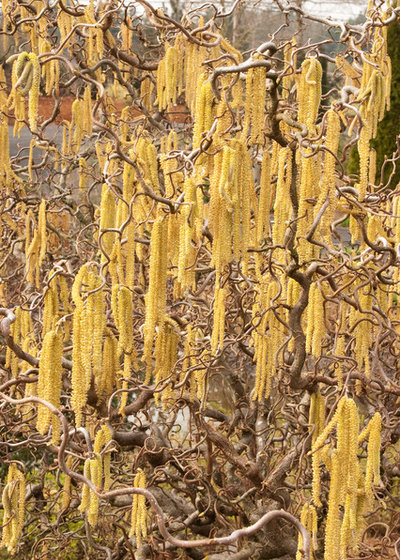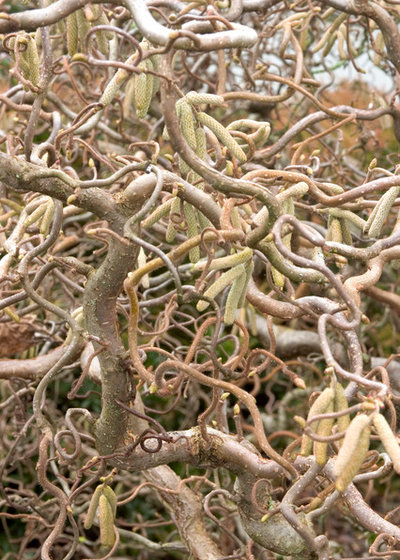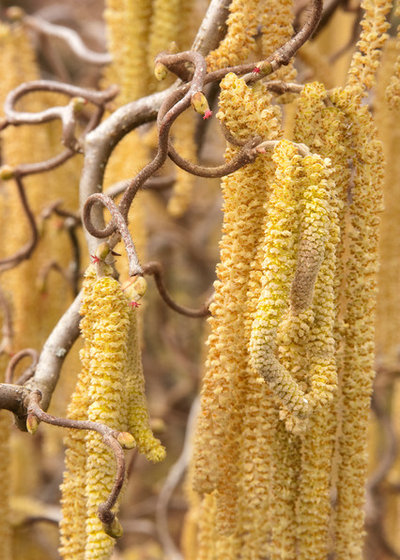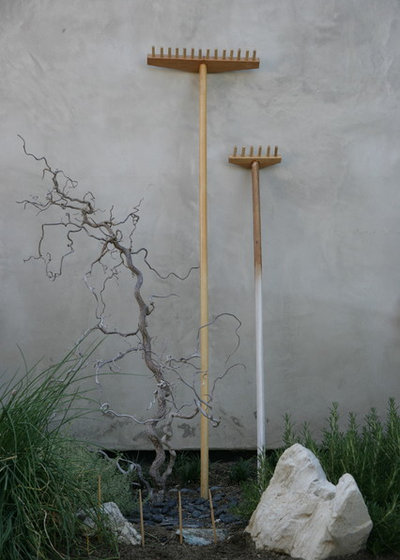Not many plants boast a better guise without their leaves, and Harry Lauder's Walking Stick (
Corylus avellana ‘Contorta’) is probably the most distinct of them. Named for a connoisseur of unusual walking sticks, this contorted specimen shines when its deciduous neighbors are dormant. While you won't find it everywhere, there's nothing forgettable about this plant.

Monrovia
Botanical name: Corylus avellana ‘Contorta’
Common names: Harry Lauder’s Walking Stick, corkscrew hazelnut, contorted hazelnut
USDA zones: 4 to 8 (find your zone)
Water requirement: Regular
Light requirement: Full sun to partial shade
Mature size: 8 to 10 feet tall and wide
Benefits and tolerances: Deer resistant; nuts attract wildlife
Seasonal interest: Deciduous; flowers in early spring on bare branches; beautiful winter interest when gnarled branches are exposed
When to plant: Plant cuttings in early spring.

Monrovia
Distinguishing traits. This is a plant of distinguishing traits — from its colorful pendulous catkins to its distinct corkscrew branching structure. Its attractive foliage is perhaps the least memorable feature.
The twisted form of Harry Lauder’s Walking Stick reaches 8 to 10 feet tall and wide over an extended period of time. It’s deciduous, so its smooth, gnarled branches are obscured by medium-green foliage from spring through fall. Once the leaves yellow and drop, however, the plant reveals its distinct and architectural form in the winter landscape.

Monrovia
In late winter to early spring, 2- to 3-inch yellow catkins hang from bare branches. The plant infrequently produces edible nuts that are treats to wildlife.

Lenkin Design Inc: Landscape and Garden Design
How to use it. Harry Lauder’s Walking Stick is a specimen plant and should be a prominent accent in the garden. Consider the view when the branches are bare. Place it against a light-colored wall for stark contrast, as shown here, or where light will highlight its form. In spring and summer it forms a denser screen. Cut branches also make a beautiful floral arrangement.
Planting notes. 'Contorta' thrives in rich, well-drained soil that's somewhat moist. It’s not the quickest grower, so be patient.
The plant spreads by suckers, and many specimens are grafted onto the rootstalk of the pure
Corylus avellana species. If you purchase a specimen that has been grafted, suckers will shoot straight up and should be removed immediately. This can be time consuming. Be aware of this difference when you purchase your plant. In winter, thin branches to enhance and accentuate its form as well as to clean the tree up.
The plant is pretty disease free but is susceptible to Eastern filbert blight, causing planting restrictions in some areas. Japanese beetles can attack leaves; remove them by hand to control the damage. Long-term damage is not a major concern, but it’s best to remove beetles regularly.





